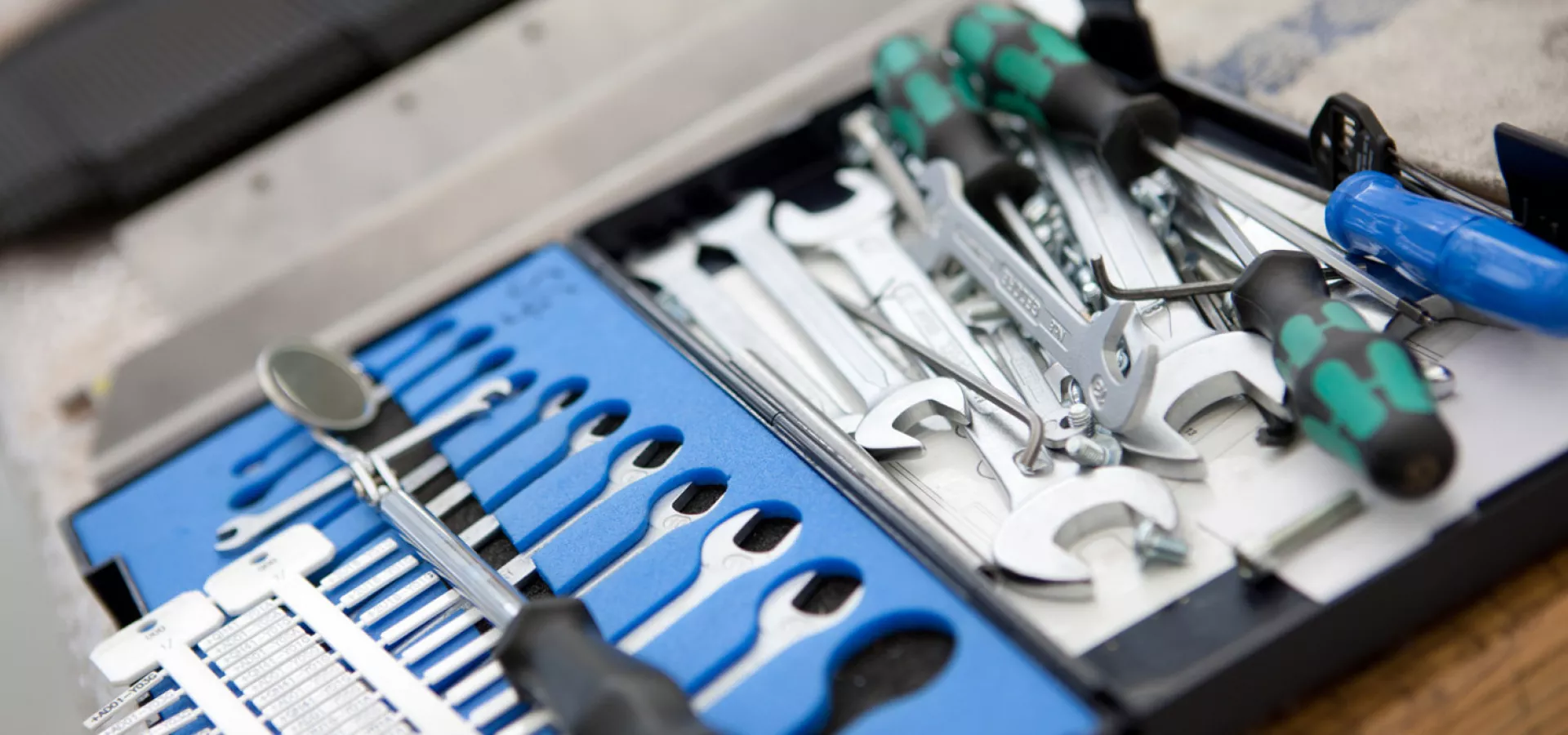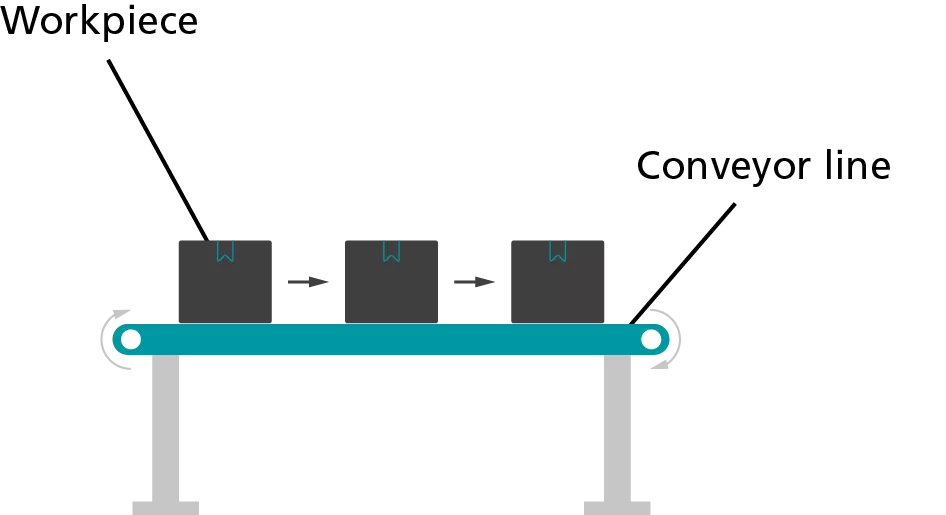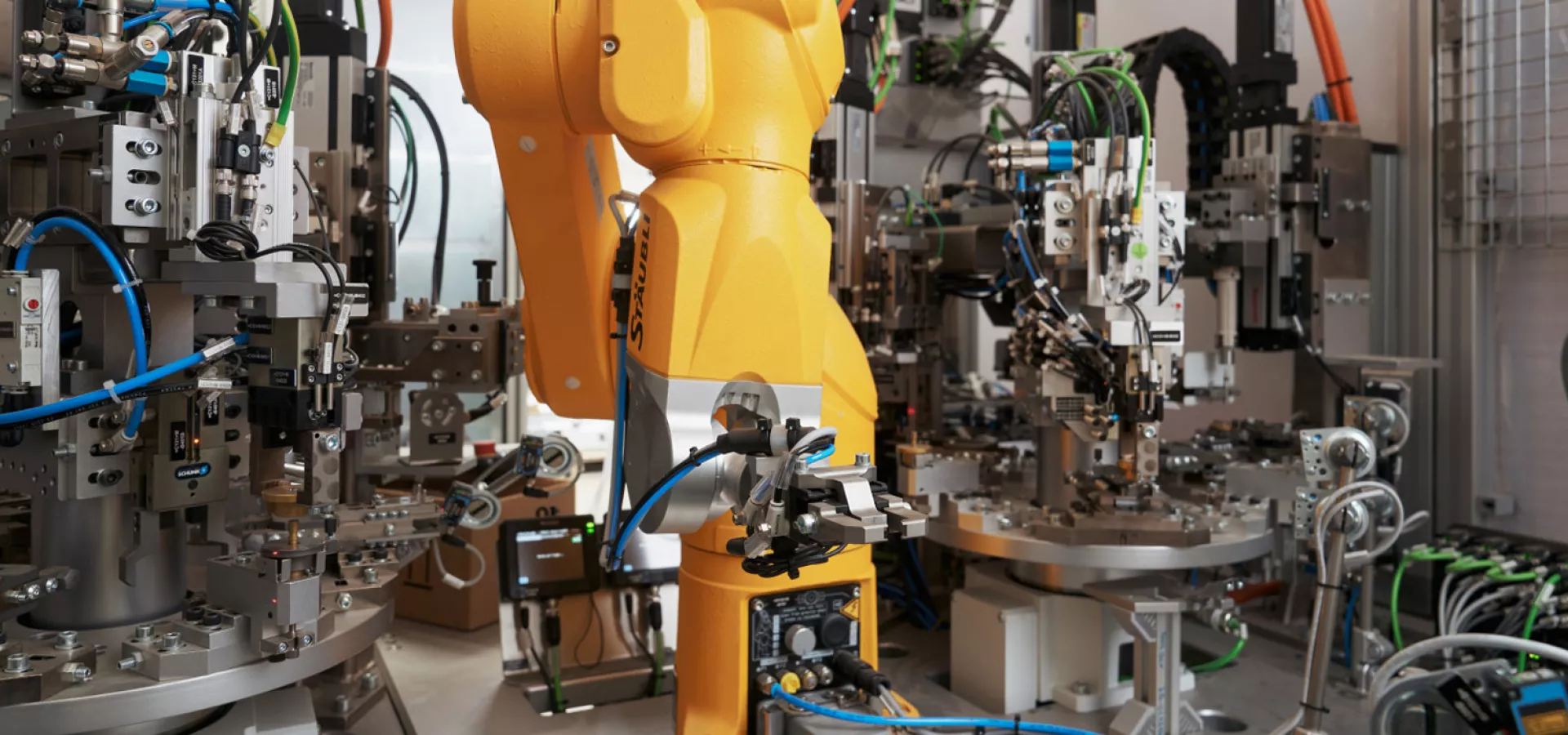
Linear conveyor
A linear conveyor is a system from the field of feeding technology, which primarily serves the horizontal transport of workpieces in various sizes. The linear conveyor is thus in a series with other components of the feeding technology, such as the spiral conveyor or the steep wall conveyor. In contrast to other systems from this area of conveyor technology, such as a conveyor belt, the linear conveyor can also be categorized as a so-called vibratory conveyor. Accordingly, it achieves the transport of the workpieces on it with the help of linear oscillations. Experts therefore sometimes refer to linear conveyors as vibratory machines.
How does a linear conveyor work?
A linear conveyor is basically similar to a type of vibrating device in which workpieces or bulk material of various sizes are transported from a container to the target point via a linear conveyor element with the aid of vibration-like oscillations. The conveying element usually resembles a transport pipe or a transport trough and can be adapted in size to the workpieces to be transported. The course of the conveying pipe or trough is always horizontal. This means that the linear conveyor can only transport over one plane. Sometimes it is possible to tilt the conveying element upwards or downwards by up to ten degrees in order to overcome smaller distances of vertical alignment.
In order to transport the workpieces, the linear conveyor or the conveyor trough moves with small, jerky movements in the direction in which the transport is to take place, as well as upwards at the same time. During this movement, the bulk material is, so to speak, carried along: It lifts off together with the chute. When the chute then moves down and back again, the bulk material stops or falls down due to inertia. In this way, it is pushed forward a little further with each oscillation. The speed of the transport on the linear conveyor depends on the oscillation frequency and can be adjusted individually.
What are the advantages of linear conveyors?
Linear conveyors can be used wherever workpieces need to be reliably transported from A to B. Thanks to individual adjustment options, the transport speed can be regulated individually based on the vibration frequency. At the same time, the linear conveyor can be adapted to workpieces of different sizes: from pebble-sized bulk material to goods with dusty grain size, everything can be transported with the linear conveyor. Overall, the conveyor is considered to be very durable, robust and low-maintenance. In addition, jams or blockages rarely occur, as they can usually be cleared quickly on their own due to the oscillating movements. In addition, transport on a linear conveyor is particularly gentle and runs smoothly even over longer distances. Linear conveyors are sometimes interposed as buffer or accumulation sections in complex plants to enable the production chain to run smoothly.



